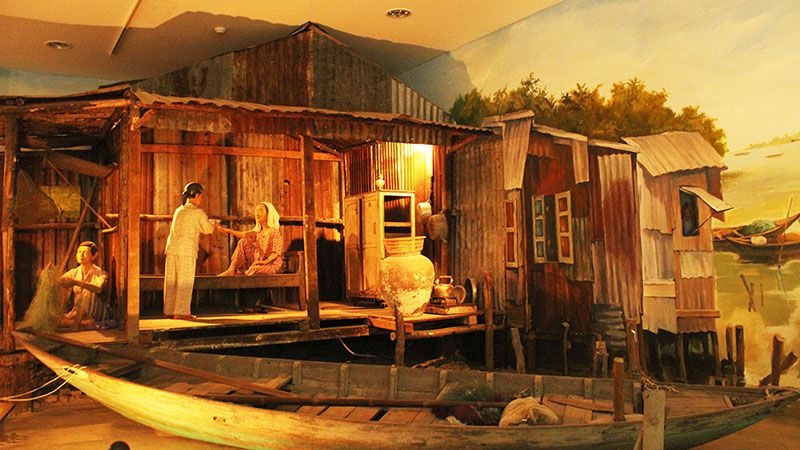
Museum introduces new logo and implements new activities to improve quality and attract more tourists.
The Da Nang Museum has introduced a new logo, a multi-language interpretation system via mobile devices, and a data bank of the central city’s cultural heritage.
To enhance its brand for better marketing, the logo is designed with a circle on the outside, representing the sky, and a square in the middle, which symbolizes the earth. The logo’s center is a stylized image of Dien Hai Citadel, surrounded by three modified letters of D, N, M, which stands for Da Nang Museum.
The multi-language interpretation system, meanwhile, is the product of a cooperative effort between the museum, the city’s Department of Science and Technology, and Da Nang University, and aims to help visitors readily access detailed information of the exhibits via mobile devices.
Visitors can download the “Da Nang Museum” app from the App Store or Google Play, which then allows the phones to scan QR codes to hear a voice guide on the 600 documents and objects at the museum.
The museum also introduced a data bank of Da Nang’s cultural heritage, with more than 3,300 documents. The bank aims to promote the application of information technology in collecting, storing and preserving and promoting the cultural heritage value of the city. Around 250 of these are written documents on traditional arts forms and practices, such as “tuong” (traditional opera), “bai choi” singing (a popular folkloric style of singing in Vietnam’s central and south-central regions), and whale worshipping festivals.
Da Nang Museum is located inside Dien Hai Rampart, a national historical monument that marks the first fighting by local soldiers and people against the French – Spanish Coalition Forces (1858-1860) at 24 Tran Phu Street, Hai Chau district. With a display area of 3,000 sq m, the museum introduces more than 2,500 valuable objects and documents on the city’s natural and social history, revolutionary struggle, war remnants of the US Army in Da Nang and surrounding areas, and the cultural characteristics of ethnic minority groups in the city and neighboring Quang Nam province. The museum welcomed over 275,500 visitors (including more than 240,000 foreigners) in 2018, up 38 per cent against 2017.
Vietnam’s third-largest city, Da Nang is famous for its stunning coastline and sandy beaches and famous nearby world heritage sites, such as My Son Sanctuary and Hoi An ancient town. It’s also a popular base for visiting the inland Ba Na Hills, the beautiful Hai Van Mountain Pass, with views over Da Nang Bay and Marble Mountains, and the recent Golden Bridge, which opened last June. The city welcomed over 7.6 million visitors last year, including nearly 2.9 million foreigners, up 15.5 per cent and 23.3 per cent against 2017, according to the city’s Department of Culture, Sports and Tourism.
